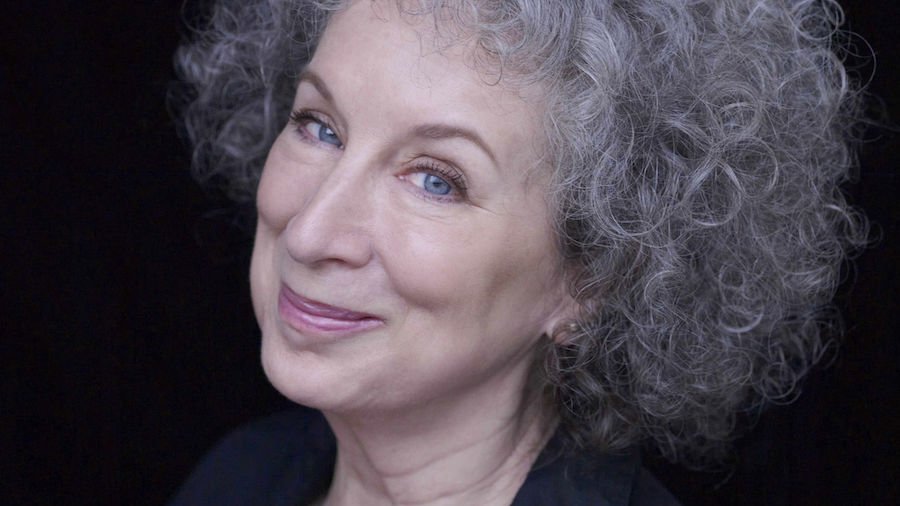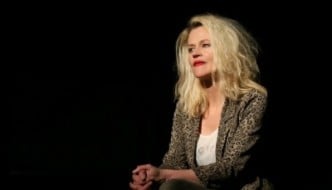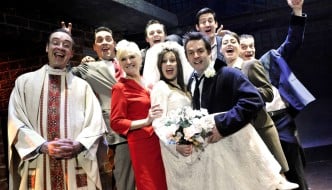 On Tuesday night, York Theatre Royal and York Literature Festival played host to the sold out An Evening with Margaret Atwood, one of only nine appearances in the UK on this visit. Booker prize winner Margaret Atwood is a prolific writer across many disciplines. She has published 17 novels and 10 short story collections as well as poetry, non fiction essays, children’s books, libretti, and now a comic book called Angel Catbird. Any evening exploring her work was going to be varied and insightful.
On Tuesday night, York Theatre Royal and York Literature Festival played host to the sold out An Evening with Margaret Atwood, one of only nine appearances in the UK on this visit. Booker prize winner Margaret Atwood is a prolific writer across many disciplines. She has published 17 novels and 10 short story collections as well as poetry, non fiction essays, children’s books, libretti, and now a comic book called Angel Catbird. Any evening exploring her work was going to be varied and insightful.
On entering the theatre, the stage curtain was animated by Zach Lieberman’s art installation, inspired by Atwood’s latest novel Hag-Seed. Drawing on the themes in the book, text flexed and words became costumes around the hollow of a figure, shuddering, and reforming. This collaboration showed the power when writers and visual artist inspire each other’s work.
Atwood was joined on stage by Dr Liesl King, Head of Programme: English Literature at York St John University. An event of this nature relies on the strength of conversation between the two participants, and Dr King’s questions were insightful and open enough to allow the discussion to shift across different themes in Atwood’s work.
The main focus was, of course, Hag-Seed. The fourth novel in the Hogarth Shakespeare series, Hag-Seed is inspired by The Tempest. Atwood talked about how she was lucky to be asked early, allowing her to choose the play she wanted to work with for the series, and explained that this was because Shakespeare’s play is about the magic of theatre, with Ariel as the special effects guy. She also talked briefly about her writing routine, which she described as “rash commitment, procrastination, and panic”.
Following a brief history of how The Tempest has been re-interpreted since it was written, Margaret talked about why, thematically, it felt right to set Hag-Seed in a prison, as this element is present in the original play. (I won’t give too much away. There was an option to get a signed copy on the evening, which I took advantage of).
The conversation then moved on to Future Library, a fascinating project by artist Katie Paterson. Each year for one hundred years a writer will be asked to contribute a text, which will be sealed and remain unread until 2114. At the end of the century a forest grown in Norway for the duration will be harvested and the books printed in 2114. Atwood was the first writer asked to contribute. Dr King asked how it felt that no-one living would read it, and Atwood talked about travelling to Norway with the sealed manuscript, with the risk that customs might ask her what was in the box, which would be met with a refusal to open it.
Following the main section of the evening Dr King opened up questions to the audience. The remaining part of the event included discussions about the need for children to be active, why Canada has produced so many good female writers, and clarification about the third epitaph in The Handmaid’s Tale.
Margaret Atwood was insightful and knowledgeable, with a very dry sense of humour. Throughout the evening it was a pleasure to listen to her speak about her work. If you get a chance to see her talk on her next visit I highly recommend grabbing a ticket before they sell out.
Filed under: Written & Spoken Word
Tagged with: books, literature, Margaret Atwood, review, theatre, written word, York, York Theatre Royal



Comments